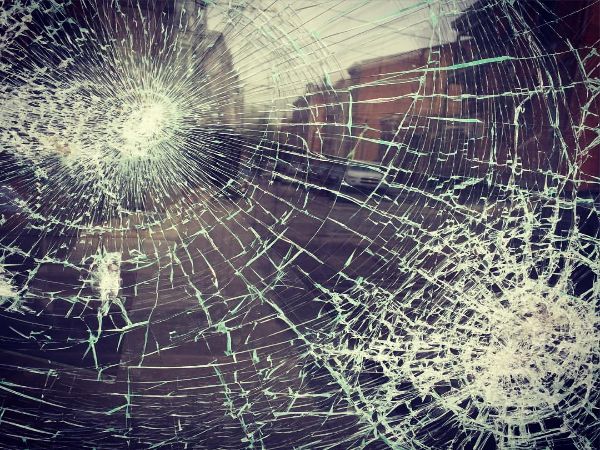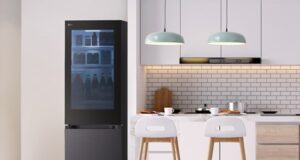
Windows play an essential role in the overall appearance and performance of a building. In the process of selecting windows, the choice between laminated glass and toughened glass can be challenging. Both types offer unique properties and benefits, so it’s crucial to understand their differences before making a decision. This article will explore laminated and toughened glass, their properties, and their advantages and disadvantages. We will also compare them to help you make an informed decision for your window needs.

What is Laminated Glass?
Properties of Laminated Glass
Laminated glass is made by sandwiching a layer of polyvinyl butyral (PVB) or ethylene-vinyl acetate (EVA) between two or more glass panes. This process results in a strong, durable glass that maintains its structure even when broken. The interlayer prevents the glass from shattering into dangerous shards, making it an ideal choice for safety and security applications.
Benefits of Laminated Glass
- Safety: Laminated glass remains intact when broken, reducing the risk of injury from shattered glass.
- Security: The tough interlayer can deter burglars, as it makes breaking through the glass more difficult.
- Noise reduction: The interlayer provides excellent sound insulation, reducing outside noise.
- UV protection: Laminated glass can block up to 99% of harmful UV rays, protecting your interiors from fading.
Disadvantages of Laminated Glass
- Cost: Laminated glass is typically more expensive than toughened glass.
- Weight: The additional interlayer makes laminated glass heavier than toughened glass, which may require stronger support structures.
What is Toughened Glass?
Properties of Toughened Glass
Toughened glass, also known as tempered glass, is produced by heating the glass to high temperatures (about 620°C) and then cooling it rapidly. This process strengthens the glass, making it 4-5 times stronger than ordinary annealed glass. When broken, toughened glass shatters into small, relatively harmless granules.
Benefits of Toughened Glass
- Strength: Toughened glass is significantly stronger than standard glass, making it more resistant to impact and breakage.
- Safety: When broken, toughened glass shatters into small, granular pieces, reducing the risk of injury.
- Thermal resistance: Toughened glass can withstand temperature fluctuations and is less prone to thermal stress cracks.
- Affordability: Toughened glass is generally
less expensive than laminated glass, making it a more budget-friendly option.
Disadvantages of Toughened Glass
- Cannot be altered: Once toughened, the glass cannot be cut, drilled, or altered in any way without compromising its strength.
- Spontaneous breakage: Although rare, toughened glass can occasionally shatter spontaneously due to internal stresses or inclusions.
Comparison: Laminated Glass vs Toughened Glass
Safety and Security
Both laminated and toughened glass meet AS1288 safety glass requirements and provide enhanced safety features compared to standard glass. While laminated glass remains intact when broken, toughened glass shatters into small granules that pose minimal risk of injury. However, laminated glass offers superior security as the interlayer makes it more difficult for burglars to penetrate.
Thermal Insulation and Energy Efficiency
Toughened glass is more resistant to thermal stress and temperature fluctuations, making it suitable for areas with significant temperature variations. On the other hand, laminated glass can be combined with low-emissivity coatings and argon gas fills to improve thermal insulation and energy efficiency. In this aspect, the choice between laminated and toughened glass would depend on the specific requirements of your project.
Noise Reduction
Laminated glass offers superior noise reduction capabilities due to its interlayer. This makes it an ideal choice for buildings in noisy areas or those requiring sound insulation, such as offices and hospitals.
Durability and Maintenance
Both laminated and toughened glass are durable and low-maintenance. However, the interlayer in laminated glass can sometimes degrade over time, especially when exposed to moisture or sunlight. In contrast, toughened glass does not suffer from this issue but can shatter spontaneously in rare cases.
Cost
Toughened glass is generally more affordable than laminated glass, making it an attractive option for budget-conscious projects. However, the additional benefits of laminated glass, such as enhanced security and noise reduction, may justify the higher cost for some applications.
Conclusion
When comparing laminated glass and toughened glass for windows, it’s crucial to consider factors such as safety, security, thermal insulation, noise reduction, durability, maintenance, and cost. While laminated glass offers superior security and noise reduction, toughened glass is stronger, more thermally resistant, and more affordable. Ultimately, the choice between laminated and toughened glass will depend on the specific requirements of your project and your personal preferences.
Author:
Paul Tatner – I am a glazier from Bondi Glass Replacement with over 15 years experience in the glass industry.
Connect with me onLinkedin


